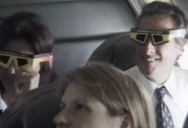In 1973, Passengers On The Concorde Were Treated To A 74-Minute Solar Eclipse

We have been treated to a couple of amazing solar eclipses in North America over the past decade, and it’s truly something to behold.
The longest we’ve been able to see totality is around four minutes.
In 1973, though, passengers aboard the Concorde had prime seats for over and hour.
During the recent eclipses, NASA used a WB-57 jet to chase the eclipse in the hopes of gathering more data, and a fast plane is really the only way we have to extend our viewing window.

Bharat Kunduri is the leader of a project meant to study the ionosphere during the eclipse, and gave a statement.
“The eclipse basically serves as a controlled experiment. It gives us an opportunity to understand how changes in solar radiation can impact the ionosphere, which can in turn impact some of these technologies like radar and GPS that we rely on in our daily lives.”
Even so, they will only get about 6 minutes and 22 seconds.
In 1973, the supersonic jet Concorde left Las Palmas in the Canary Islands bound for Chad, putting it in the path of totality for over an hour.
Donald Liebenberg was aboard the aircraft that day.
“At 74 minutes, our group aboard the Concorde set a record for the amount of time spent in totality that has never been broken. To say the least, it was an experience I will never forget.”
The “first” and “third contact” phases of the eclipse were also extended.
Since the Concorde has been retired, you’ll have to make due with the video captured by NASA.
And 6 minutes is better than 3 or 4.
If you thought that was interesting, you might like to read about 50 amazing finds on Google Earth.

Sign up to get our BEST stories of the week straight to your inbox.




